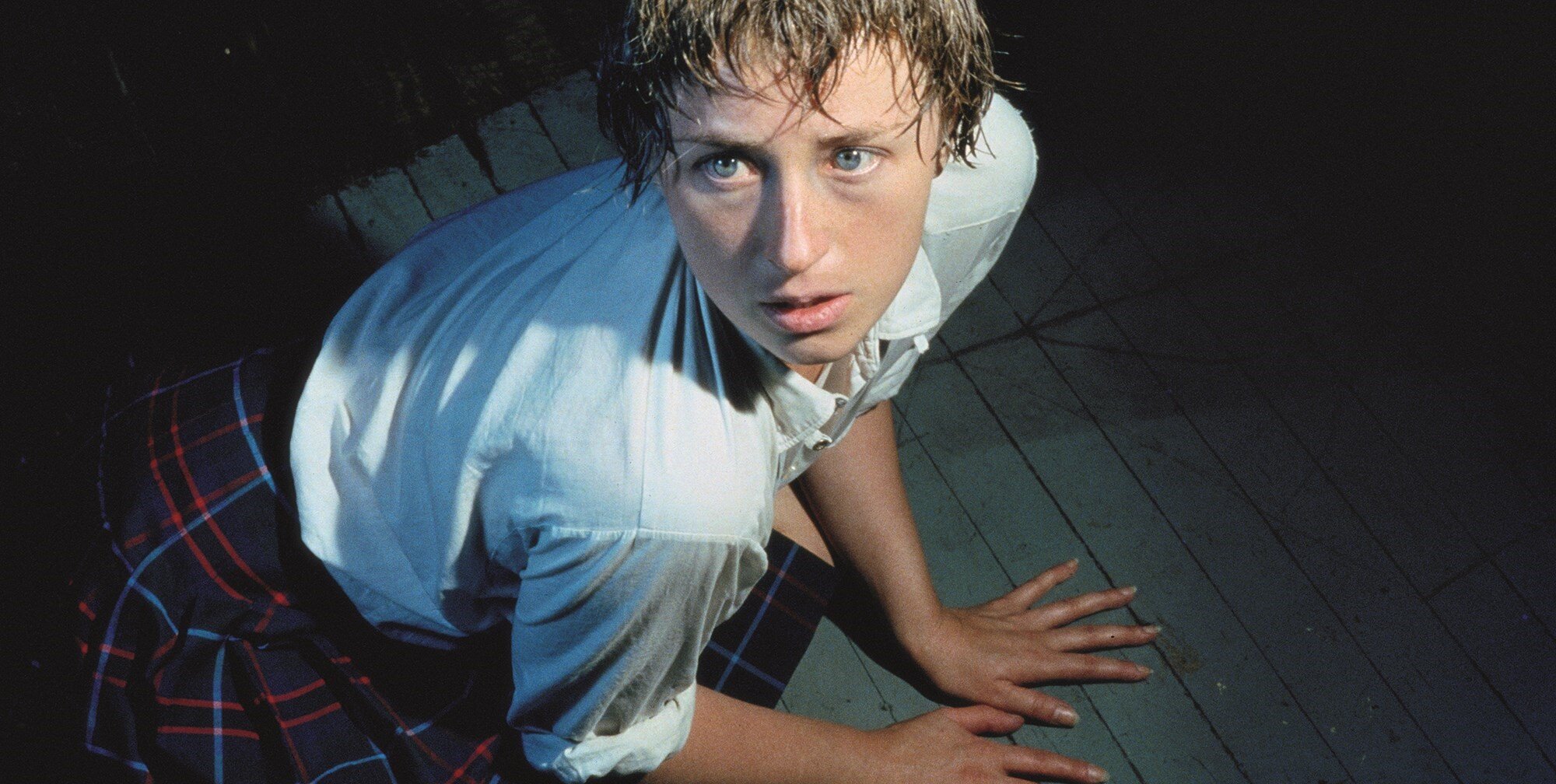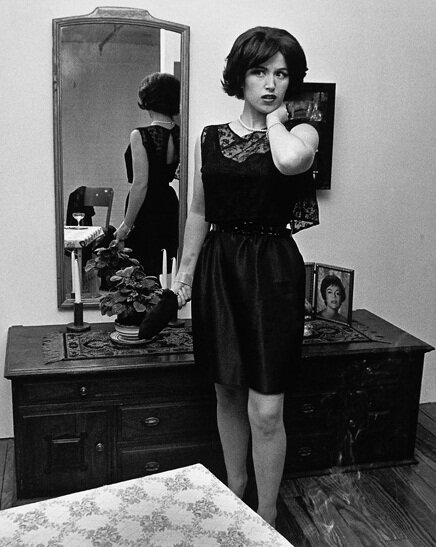Blogging about an artist as prolific and enduring as New York based Cindy Sherman is a challenge. Where to start? Where to finish? Listening to Sherman talking about her work doesn’t help a great deal. She once claimed that she has no idea what her work is about until she reads a review of it. She works intuitively and it’s not always clear to her what she aims to achieve until she sees the final image.
What is clear is that she is one of the most significant American artists of the last 40 years. She just keeps going on, this portrayer of alienation, of oddity (with a twist of humour), of what it’s like to be a woman in contemporary America. And her medium is photography where she is not only the photographer, but also the model. She painted whilst at college but found the process too laborious, she wanted to spend more time focusing on the composition and then get an instant image.
Untitled#92, from Sherman’s Centrefold series, 1981
In her studio there are drawers crammed with props including false teeth, noses, eyeballs, boobs, makeup, clothes, masks etc. which she uses to disguise herself to the point of being completely unrecognisable in some of her imagery. As a child she enjoyed dressing up, but not to look like a stunning model or prima ballerina, but quite the opposite. Her aims were rather perverse, looking older even decrepit and not wanting to be recognisable. Needless to say Sherman spends a lot of time in clothing stores, but not before deciding what character type she is buying for.
Cindy Sherman being interviewed in Art 21, 2009
She rarely titles her photographs for 2 reasons. Firstly she says she is not a wordsmith (which suggests she must have hated art school, if her experiences were like mine), but also because she doesn’t want anyone to approach her work with preconceived ideas of what the characters are meant to be.
It’s been argued that Sherman’s work anticipated the selfie era, but I’m not so sure of that, although it could be fairly argued that the selfie era has made her work more relevant than ever. Yet the selfie culture is “it’s all about me”, and I see Sherman’s work as “it’s all about them”, or “it’s all about a certain character”. A recent exhibition of her work in London was titled “Cindy Sherman – the Original Selfie Queen”, a marketing strategy perhaps?
Her oeuvre encompasses so many themes that to cover them all would require a novel, so I’m going to focus on just a few.
Untitled Film Still, 1978
In her movie stills series she wanted to explore character studies that also tell a story. She didn’t want to produce something that looked like “art” or based on art theory but something that looked mass produced, like a movie and preferably a European movie. She has found more inspiration from movies than anything else. But TV has also had an influence (especially trashy TV) given that, like me, she is from the first generation to be brought up during the TV era.
Untitled, 2004
In her clown series, she wanted to explore the sense of unease a clown’s makeup can create, a questioning of what motivates someone to be a clown.
Untitled #468, 2008
But it’s her society portraits from around 2008 that I want to focus on. She has received criticism for some of these portraits which include what she calls her Hollywood Hampton types for supposedly poking fun at them, as in “she’s come from the east coast and who does she think she is?”
Untitled #475, 2008
In his review of this series, Paul Moorhouse sees these women confronting the issue of their age. “Rather than attempting an air of youthful attractiveness, they are preoccupied with their own status and sophistication as the means of preserving personal and social credibility." He makes reference to a neurosis, a chilling self-absorption which lies beneath “a mask-like veneer of charm”. Moorhouse also makes reference to the “frosty surface that is their solution to age” and an impression of “poignant frailty.” I particularly like the comment “these images are about the failure to deceive and the compulsion to do so”.
Untitled #477, 2008
These portraits deal with the issue of the passage of time and how each individual must confront his/her own mortality, an issue that Sherman was by now also confronting. She was born in 1954.
For some strange reason, whilst writing this blog I found myself watching a documentary on the wonderful British comedy actor Peter Sellers for the umpteenth time. Sellers was famous for completely absorbing the characters he portrayed, and was regarded as a human chameleon who could transform himself into any role. Many who knew him well spoke of an inner darkness or intense loneliness that haunted him, and that performing these roles may have provided an escape or sanctuary. He once claimed to have no identity of his own.
Untitled #474, 2008
Not that I’m suggesting that Sherman is the female equivalent of Sellers, after seeing her being interviewed a number of times over the years, she just seems like a very talented artist. But she once said she wants to lose herself in the imagery and her figures to look like real people. A 1994 BBC Arena program on Sherman is titled “Nobody is here but me” which says it all really.
Perhaps what we need is a male equivalent of Sherman, someone equally adept at portraying in the same dispassionate and probing manner various male character types. Us guys need the mirror to be thrust in our faces. If such an artist exists, please let me know.
At the end of an Art 21 documentary, we see Sherman leaving her exhibition at the Metro Pictures Gallery in New York on a pushbike. She’s different.
References;
American PBS Art 21
Paul Moorhouse
BBC Arena








